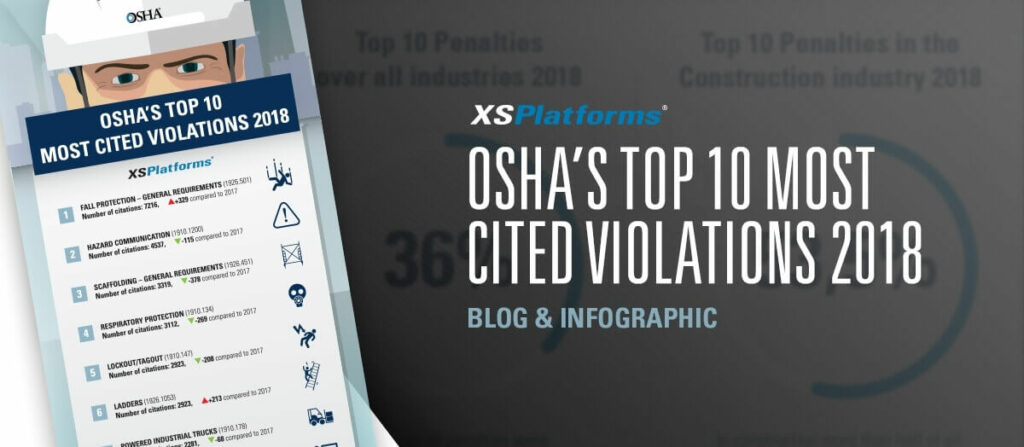A dive into OSHA’s most cited violations of 2018
Every year the Occupational Safety and Health Administration (OSHA) puts together a list of the most cited violations per standard in the United States, for the previous (fiscal) year. In general the top 10 is very similar year to year, with just the amount of citations varying. However, last year we saw fall protection training requirements (OSHA 1926.503) enter the list at number 9. This year the top 10 also has a new entry; eye and face protection. Fall protection training requirements can also still be found in the top 10, switching places with machine guarding.
The statistics once again show that general fall protection citations (OSHA 1926.501) top the list, for the eight year in a row. What is new however is that, for the first time since 2013, there was a rise in citations for this category.


